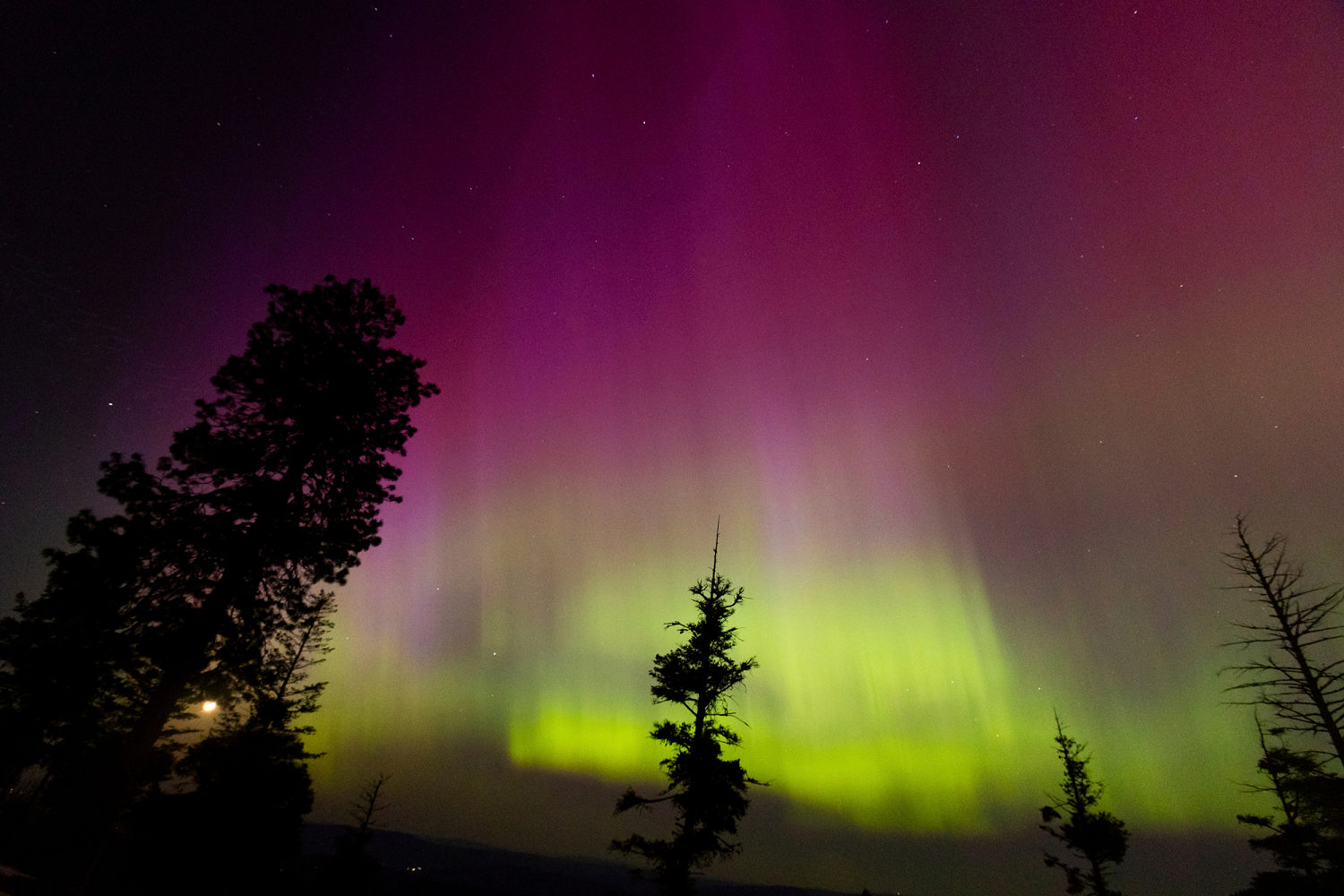
The summary
- The northern lights may be visible in the U.S. this week over several northern states.
- The displays are expected late Tuesday and into the predawn hours Wednesday, with another possible chance Wednesday evening.
- The eruption on the sun that’s responsible for the aurora forecast was much weaker than the ones in May that supercharged the northern lights around the world.
The northern lights may be visible Tuesday and Wednesday over several northern states, from New York to Idaho.
The National Oceanic and Atmospheric Administration’s Space Weather Prediction Center said Tuesday that an eruption on the sun known as a coronal mass ejection was observed Sunday, which sent plumes of solar material toward Earth.
These types of solar storms can unleash huge clouds of plasma and charged particles into space. When the energetic particles collide with Earth’s magnetic field, they interact with atoms and molecules in the planet’s upper atmosphere to create bright, colorful auroras in the night sky.
The plumes of solar material are expected to reach Earth early Wednesday, which means displays of the northern lights may be visible late Tuesday and into the predawn hours Wednesday in Canada and across parts of the northern United States, including Idaho, Montana, Minnesota, Michigan, New York and Maine.
Auroras may also be visible Wednesday evening, according to the Space Weather Prediction Center.
NOAA maintains an aurora dashboard that provides short-term forecasts of the northern lights, including maps of where they will be visible.
Eruptions from the sun can trigger geomagnetic storms, which can interfere with satellites in space. When clouds of plasma and solar radiation hit Earth, they can also disrupt power grids and transmission lines, and even cause blackouts in extreme cases.
The northern lights, also known as the aurora borealis, are typically seen at high latitudes, but strong solar storms can intensify the light shows, making them visible farther south than normal.
Skywatchers in recent months have been treated to several stunning displays of the northern lights during a high-activity period for the sun.
Sunday’s solar storm was much weaker than the series of eruptions in May that triggered severe geomagnetic storms on Earth and supercharged the northern lights for many regions of the world, including viewers in the United States as far south as Alabama.
The sun goes through 11-year cycles from minimum to maximum activity, and the current cycle is expected to peak in July 2025, according to NOAA.
Auroras typically appear as shimmering curtains of green light, but the lights can also take on pink, purple, blue and red hues, depending on the current composition and density of the planet’s atmosphere.

Post a Comment